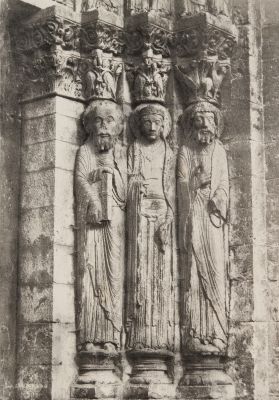
Title
Ferme au Toit de Chaume, Vers, Essais De LithophotographieArtist
Lemercier, Rose-Joseph (French, 1803-1877)Publication
Essais de lithophotographie Impressions obtennes directement sur pierre par la photographie Par M.M. Lemercier, Lerebours & BarreswilDate
1852Process
LithophotographieAtelier
Lemercier, Lerebours, Barreswil et DavanneImage Size
15.8 x 22.2 cmSheet Size
22.8 x 28.4 cm
The Success of this experiment gave rise to the modern photomechanical printing industry.
In 1852 a Parisian lithographer Lemercier, with two chemists, Barreswil and Davanne, and an optician, Lerebours, developed a version of the bitumen of Judea process devised by Nicephore Niepce to make his Heliographs. Their process was the first successful method of obtaining continuous tone photographic reproductions from a lithographic stone. On the 20th June of that year they submitted a description of their invention to the Academy of Sciences at Paris. Two years later, Lemercier went further and published a set of six halftone prints under the title Lithophotographie: Ou Impressions Obtenues Sur Pierre À L’aide De La Photographie. A full set of these prints was given to the Paris Academy of Sciences (9 January, 1854) as further proof that practical photo-lithography had been achieved. However, the success of their method was limited. Lemercier soon abandoned it because only a few copies could be reliably made and after 1860 he adopted Alphonse Poitevin’s process in preference to the method he and his associates had patented.
Very rare. Only cover and two plates are held in the NYPL collection.
Reproduced / Exhibited
La Photographie II Collection Marie-Thérese et André Jammes Paris 21 March 2002 Lot 50
References
“John Osborne and the invention of photolithography", by Dennis Lindsay Bryans, Swinburne University of Technology, Melbourne, Australia, 2000. Chapter 7
